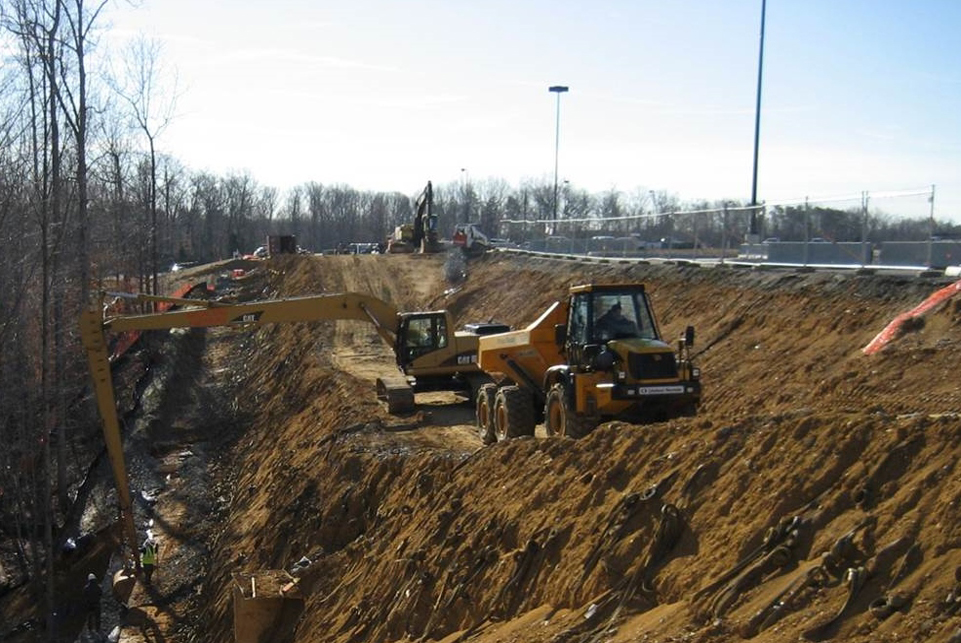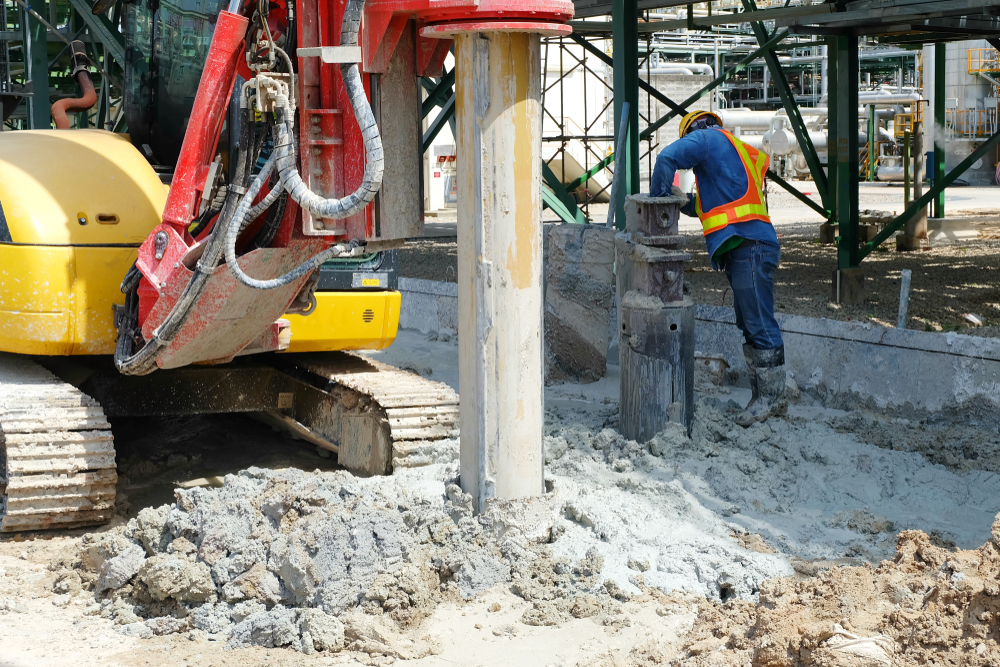Navigating the Complexities of Geotechnical Eng Projects
Wiki Article
The Crucial Contributions of Geotechnical Engineers in Examining Dirt Actions and Foundation Design for Sustainable Facilities Advancement
Geotechnical designers serve as a cornerstone in the realm of lasting framework growth, where their proficiency in examining dirt habits directly influences the security and durability of frameworks. By utilizing sophisticated strategies such as Typical Infiltration Tests and Cone Penetration Screening, they meticulously evaluate dirt residential properties, bring about educated choices on structure style. These evaluations not only reduce risks connected with differential settlement yet additionally lead the method for ingenious, ecologically mindful practices. As we explore the vital duty they play, the effects of their payments increase important inquiries concerning the future of facilities durability and sustainability.Function of Geotechnical Designers

In enhancement to website examinations, geotechnical engineers assess potential dangers such as dirt liquefaction, incline security, and groundwater problems. They apply innovative engineering concepts to establish solutions that minimize these dangers, ensuring that layouts conform with relevant codes and requirements. Their work usually entails partnership with other design disciplines, designers, and environmental researchers to create integrated approaches to facilities growth.
Moreover, geotechnical designers add to lasting practices by advertising making use of products and approaches that lessen ecological impact. Via their comprehensive understanding of dirt technicians and geology, they play an important duty in fostering risk-free, resistant, and sustainable facilities that fulfills the needs of culture while protecting the environment.
Dirt Actions Assessment Strategies
Comprehending dirt behavior is fundamental to notified decision-making in geotechnical design, as it straight influences the design and building processes. Different evaluation strategies are used to evaluate soil homes, making sure exact forecasts of its performance under different loading conditions.One main technique is the Typical Penetration Test (SPT), which provides insights into soil density and consistency with the resistance come across throughout infiltration. In A Similar Way, Cone Infiltration Screening (CPT) supplies a continual account of dirt stratification and in-situ toughness criteria, making it possible for an extra thorough understanding of subsurface problems.
Laboratory tests, such as Atterberg limits, unconfined compressive stamina, and triaxial examinations, are necessary for identifying soil habits under controlled problems. These examinations assist in the determination of crucial parameters, consisting of shear leaks in the structure, compressibility, and toughness.

Foundation Design Principles
Foundation layout concepts are critical for ensuring the security and long life of frameworks, as they determine how loads are sent from the superstructure to the underlying dirt. These concepts include different considerations, including load-bearing capacity, negotiation, and side stability. An extensive understanding of soil mechanics is essential for geotechnical designers to review the communication between the foundation and the dirt.One key concept is the proper choice of foundation kind, which may include superficial foundations, such as spread footings, or deep structures, like caissons or piles, relying on soil conditions and architectural tons - geotechnical industry. The foundation has to be created to reduce differential negotiation, which can cause structural damages

Sustainable Infrastructure Practices
How can we properly incorporate sustainability into framework methods? Sustainable framework practices start with detailed site analyses, which examine soil actions, regional ecosystems, and source availability.In addition, utilizing innovative building and construction methods, such as using low-impact structures and recycled visit site materials, substantially decreases the carbon impact of infrastructure tasks. Geotechnical engineers play a crucial role in picking appropriate products that enhance longevity and sustainability, such as utilizing geo-synthetics to boost soil security and lower erosion.
Additionally, sustainable facilities techniques require continuous surveillance and maintenance to make sure that frameworks remain durable over time. This includes carrying out flexible management methods to address potential ecological adjustments. Collaboration among stakeholders-- including designers, neighborhood communities, and policymakers-- is critical for integrating sustainability objectives right into task planning and implementation. Ultimately, these methods not just add to the long life of frameworks however likewise promote a healthier atmosphere, aligning facilities development with broader sustainability purposes.
Situation Research Studies and Applications
Case research studies in geotechnical engineering provide beneficial insights right into the practical applications of dirt habits and sustainable framework practices. One noteworthy instance is the building of the Burj Khalifa in Dubai, where considerable dirt testing and evaluation were carried out to examine the special obstacles positioned by the region's loosened sand and high water table. Geotechnical engineers utilized progressed techniques such as vibrant probing and cone infiltration screening find out here now to determine the soil's load-bearing ability, ultimately leading to the layout of a deep structure system that supports this famous structure.An additional important situation is the remediation of the San Francisco-Oakland Bay Bridge after the 1989 Loma Prieta earthquake. Geotechnical assessments revealed the need for soil stabilization methods, consisting of grouting and soil nailing, to enhance the seismic resilience of the foundation. These interventions not just boosted the bridge's safety however likewise added to its longevity and sustainability.
Such study exhibit exactly how geotechnical engineers play an essential function in understanding dirt habits and using ingenious services to ensure the architectural honesty and sustainability of infrastructure jobs. civil consulting engineers. Their expertise is vital in attending to the facility challenges positioned by various dirt problems throughout diverse geographical locations
Verdict
In verdict, the payments of geotechnical designers are important for the assessment of dirt actions and the style of structures, which are essential for lasting infrastructure growth. Through the application of advanced screening methods and ingenious products, these specialists ensure the stability and security of frameworks while decreasing environmental effects. The integration of lasting practices promotes durability in facilities projects, highlighting the relevance of partnership amongst stakeholders to accomplish reliable construction options that satisfy both ecological and social demands.Geotechnical engineers offer as a cornerstone in the realm of lasting facilities development, where their knowledge in analyzing soil actions directly influences the security and durability of structures.Geotechnical designers play a critical duty in the layout and building and construction of framework by analyzing soil and rock actions to make sure stability and safety. A thorough understanding of soil technicians is crucial for geotechnical engineers to assess the interaction between the soil and the foundation.
Geotechnical evaluations exposed the need for dirt stabilization strategies, including grouting and dirt nailing, to enhance the seismic durability of the foundation.In conclusion, the contributions of geotechnical designers are vital for Recommended Site the evaluation of dirt habits and the design of foundations, which are vital for sustainable framework advancement.
Report this wiki page